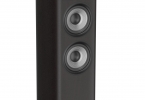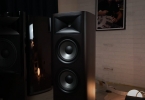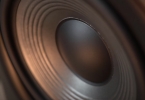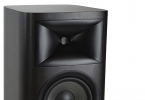JBL Studio 690 Floorstanding Loudspeaker Review

Mark Gusew comes away seriously impressed by this large affordable floorstanding loudspeaker…
JBL
Studio 690 Floorstanding Loudspeaker
AUD $3,699 RRP

JBL makes a plethora of loudspeakers for everyone from professional recording engineers and stadium concert goers, to home cinema fans and headphone listeners. Few speaker manufacturers have the sheer breadth of product range or experience of JBL. The Studio 6 series employs professional compression driver technology from the company’s pro ranges in a product purposed for home use – yet the pricing won’t break the bank.
The Studio 690 is just one model away from being top of the Studio 6 range, which consists of three bookshelf speakers, three models of floorstanders, two centre channels, and lastly, two subwoofers. So there is a size that should suit the majority, whether for stereo or multi-channel home cinema uses. The 690 stands 1,058mm tall, 300mm wide and 350mm deep – meaning it should be large enough for most people’s needs. At 29kg apiece, it’s a heavy speaker for the money. In Australia, they’re only available in the Walnut finish which while stunning, we really dig the stealth black option available in other regions.
A two-and-a-half-way bass reflex design, this big JBL sports twin 200mm woofers and a single 25mm high-frequency compression driver; the latter are well known for their efficiency and power handling capabilities, and arguably the hallmark of JBL speakers in general. They play loudly without distress and are often used for live sound reinforcement purposes. The 2414H-1 HF driver used here is fitted with a High Definition Imaging (HDI) waveguide to aid dispersion.
The two woofers are identical and use JBL’s PolyPlas cones – a type of formed plastic with five circular ridges pressed into the cone to improve stiffness. A large 70mm dust cover is fitted in the centre. There are no visible fasteners for any of the drivers; everything is neatly covered up behind the speaker trim rings.

This is a 2.5-way design with stated crossover points at 600Hz and 1.7kHz; the lower driver only handles bass, whereas the upper one gets up into the midband. This delivers some of the benefits of a 3-way design but is simpler to manufacture. There are two bass ports at the rear of the cabinet, with computer-optimised flairs on the ports and a pair of 5-way binding posts for bi-wiring or bi-amping. The front grill is of fine black cloth and is attached magnetically.
JBL quotes a sensitivity figure of 90dB (2.83V @ 1M) and a nominal impedance of 6 ohms, which is decent enough by today’s standards and won’t be a problem for any modern amplifier. Maximum power handling is stated at 250W, and the quoted frequency response is 36Hz to 40kHz (without a stated drop-off point).
I used the Studio 690 predominantly as a two-channel stereo setup, sticking with the user manual’s recommendation of a minimum of 50cm from the side and rear walls, 2m apart and an angle between the speaker and listener between 40 and 60 degrees. I found that some toe-in towards the listener helped image accuracy. Carpet spikes are supplied, and I found that they made a positive contribution to the midrange and imaging. For the review, I used Cambridge Audio Edge A and Yamaha R-N2000A amplifiers which have enough power and control over the bass to work well.

THE LISTENING
Much like the other speakers from JBL’s large stable, the Studio 690 is a competent performer with an inviting warmth and powerful bass. It looks and sounds substantial and has a visceral grip over music that grabs your attention. For example, Doing It To Death by The Kills cannot be described as boring or vanilla through this loudspeaker. Instead, you get a colourful rendition with great bass impact as it punches down low and hard. This sets a foundation for the searing lead guitar work that sounds expansive yet clean and well-defined.
The midrange sound on Take Me Home by Concrete Blonde proved a real treat.The lead guitar work, plus the gruff vocals of Johnette Napolitano gel well and have real presence in the room. Midband is quite forward and upfront, really making a statement – but it isn’t unduly hard. Upper bass is fairly fulsome but still properly controlled. Low frequencies, in general, come over with plenty of slam and impact, with Royals by Lorde sounding dynamic and punchy even at high volume levels. As you’d expect, the low bass begins to run out of puff a little higher than larger JBL speakers, but is still well extended for a product of this price. Indeed, the Studio 690’s bass is more than enough for most parties.
Further up the frequency spectrum, the unusual combination of a compression driver and directed horn makes for lots of speed, detail and extension – all without the penalty of undue harshness. Take the unflattering recording of Need Your Love by Cheap Trick on the Live at Budokan, Tokyo album. The CD is almost unplayable for all the over-the-top treble, but listening to the cleaner Tidal MQA version, you can hear the crowd’s screams present and correct, adding the correct depth perspective of this live event. Yet the Studio 690 never sounded unpleasant or fatiguing; it was certainly ‘well lit’ but never lost control even at high volumes.

The time domain performance is very good, as you might expect from JBL. The heavy sound of Deutschland by Rammstein was rendered crisply and clearly, without this speaker raising a sweat. Kick drums, for example, started and stopped very quickly and sounded hard and punchy. Indeed, the drums, guitars and keyboards all came across really coherently with metronomic timing that made listening fun.
It won’t come as a complete surprise to learn that this is a great rock loudspeaker, then. Still, some readers might be more intrigued to learn about the Studio 690’s prowess with classical music and its treatment of acoustic orchestral instruments. Simple programme material like Piano Reworks by Eydís Evensen Loom is performed smoothly and confidently, while the intense III. Scherzo. Molto vivace by Leonard Bernstein sounded highly detailed. The triangle playing in the background sounded just as clear as the more dominating tympany work.
The Door by Hildur Guðnadóttir from the soundtrack Chernobyl proves what a great speaker this is when combined in a home cinema situation or a two-channel system. The Studio 690 accurately conveys the music’s dark and menacing feel, with the bass having an easy time despite the task given it. The soundstage is suitably spacious, with lots of scale in both width and height terms. In absolute terms, the depth of the soundstage isn’t particularly special but still impresses for a relatively affordable design.

Compared to the recently reviewed PSB Passif 50 loudspeaker, the JBL Studio 690 is more of a smoothie. Playing Don’t Know Why by Norah Jones, and the former had a little more edginess to it, with a focus slightly further down the frequency range. The JBL focused in more on her vocal line, giving a more relaxed and harmonious rendition. The PSB’s soundstage wasn’t as large and voluminous, and the speaker displayed a far more limited dynamic range by comparison.
I also had the big brother of the JBL Studio 690 – the considerably more expensive HDI-3800 – to hand. I found the cheaper speaker to be eerily similar sounding in some ways, with just a little less bass extension, impact, image size, and finesse in most respects. As you would expect, given the price differential, the HDI-3800 proved to have even higher levels of transparency, detail and refinement – although whether the improvement was worth the extra money is a question that can only be answered by yourself, sitting on your local JBL dealer’s couch!

THE VERDICT
 This large but relatively affordable floorstander absolutely hits the spot, and shows JBL to be on top of its game right now. It’s hard to think of another loudspeaker that has the bang for the buck and sheer presence of the Studio 690. I never got tired of the way that my review pair filled my listening room with crisp, clean sound – complete with serious dynamics and impressive bass weight.
This large but relatively affordable floorstander absolutely hits the spot, and shows JBL to be on top of its game right now. It’s hard to think of another loudspeaker that has the bang for the buck and sheer presence of the Studio 690. I never got tired of the way that my review pair filled my listening room with crisp, clean sound – complete with serious dynamics and impressive bass weight.
Although not super neutral across the midband, it’s still easily good enough to be comfortable with a wide range of genres. Whether rocking out at near-concert listening levels or having friends around for a relaxed BBQ, this speaker makes music fun. And it’s also a movie star, too – the Studio 6 series turns out to be perfectly suited to home cinema use. Overall, it’s a formidable performer at the price and well worth an audition.
For more information visit JBL
Mark Gusew
Starting his first audio consultancy business in the early ’80s whilst also working professionally in the electronics industry, Mark now splits his time between professional reviewing and AV consultancy.
Posted in:Hi-Fi Loudspeakers Floor Standing Applause Awards 2023
Tags: jbl harman amber technology
JOIN IN THE DISCUSSION
Want to share your opinion or get advice from other enthusiasts? Then head into the Message Forums where thousands of other enthusiasts are communicating on a daily basis.
CLICK HERE FOR FREE MEMBERSHIP
Trending
applause awards
Each time StereoNET reviews a product, it is considered for an Applause Award. Winning one marks it out as a design of great quality and distinction – a special product in its class, on the grounds of either performance, value for money, or usually both.
Applause Awards are personally issued by StereoNET’s global Editor-in-Chief, David Price – who has over three decades of experience reviewing hi-fi products at the highest level – after consulting with our senior editorial team. They are not automatically given with all reviews, nor can manufacturers purchase them.
The StereoNET editorial team includes some of the world’s most experienced and respected hi-fi journalists with a vast wealth of knowledge. Some have edited popular English language hi-fi magazines, and others have been senior contributors to famous audio journals stretching back to the late 1970s. And we also employ professional IT and home theatre specialists who work at the cutting edge of today’s technology.
We believe that no other online hi-fi and home cinema resource offers such expert knowledge, so when StereoNET gives an Applause Award, it is a trustworthy hallmark of quality. Receiving such an award is the prerequisite to becoming eligible for our annual Product of the Year awards, awarded only to the finest designs in their respective categories. Buyers of hi-fi, home cinema, and headphones can be sure that a StereoNET Applause Award winner is worthy of your most serious attention.




__thumbnail_gallery_image.jpg)
__thumbnail_gallery_image.jpg)




